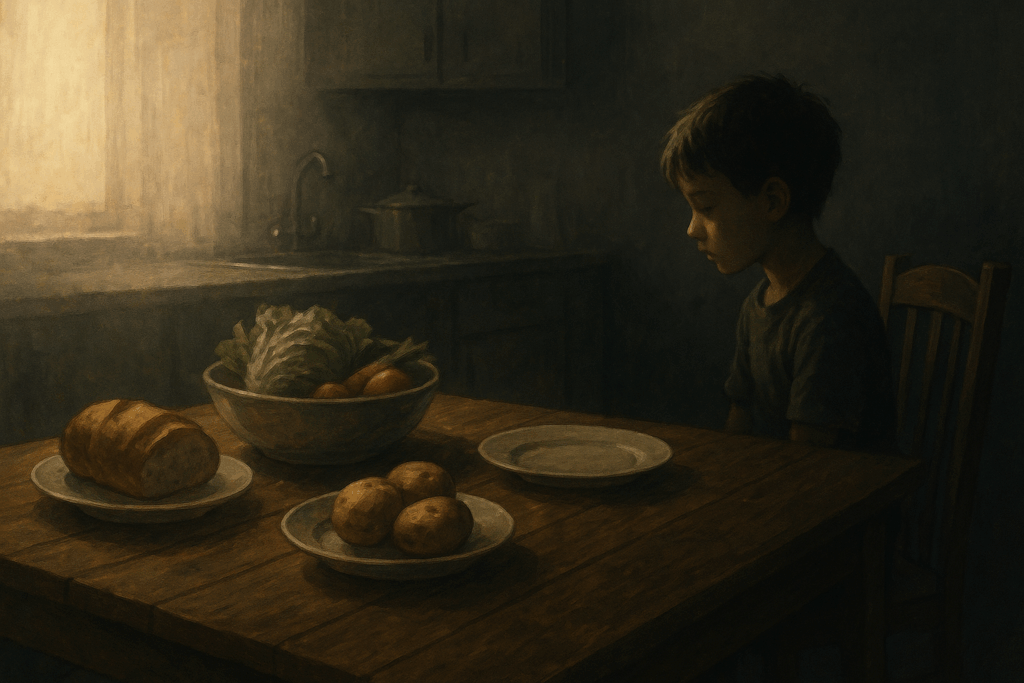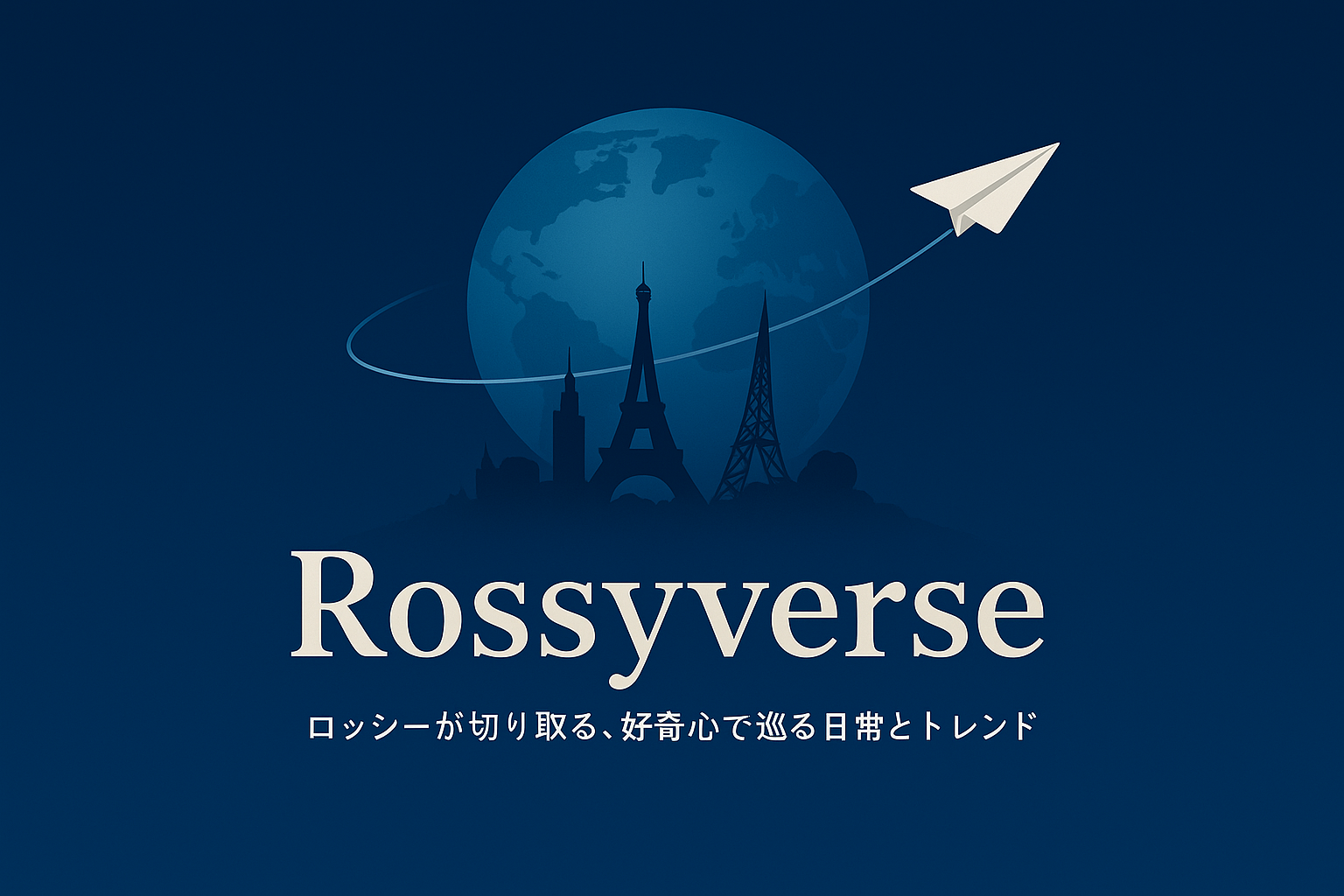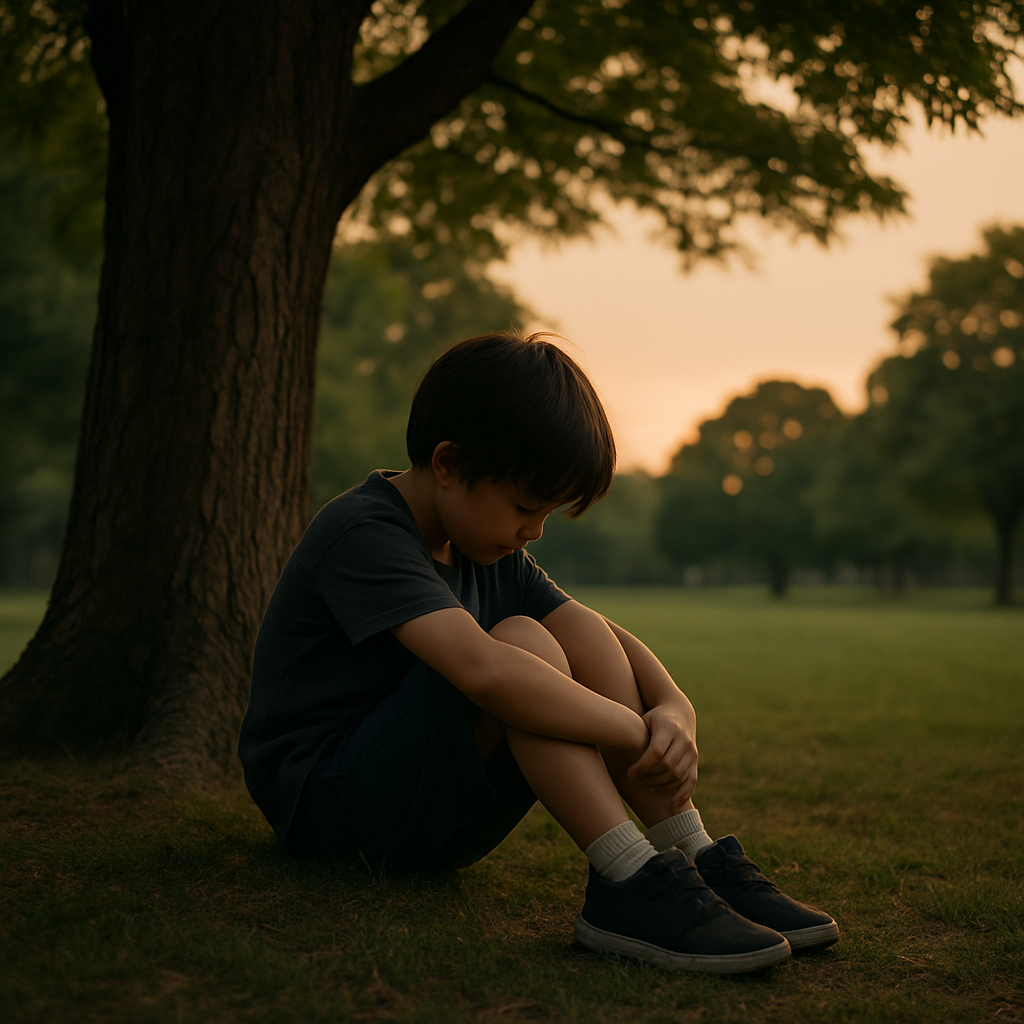🍚 1. はじめに
「飢餓をゼロに。」
SDGs(持続可能な開発目標)の2番目に掲げられたこの目標は、世界中の人々が毎日あたりまえのように“食べられる”ことを目指したものです。
「飢餓」と聞くと、多くの人はアフリカや紛争地域の深刻な食糧不足を思い浮かべるかもしれません。
しかしこの問題は、遠い国のことではありません。ここ、日本でも、いま確かに起きているのです。
6人に1人の子どもが「貧困状態」にあると言われる日本。
その“貧困”が意味するのは、決してスマートフォンを持っていないとか、習い事に行けないといった表面的なことだけではありません。
「今日のごはんがない」「学校がない日は何も食べていない」——
そんな声なき声が、見えない飢餓として、社会のすぐ隣に存在しているのです。
この国の豊かさの影で、静かに空腹を抱える子どもたちがいます。
そしてその事実を、私たちは見えないふりをしていないでしょうか?
この文章では、日本の「見えない飢餓」に焦点を当て、
学校給食が命綱となっている現実、地域による支援の動き、
そして私たち一人ひとりができる行動について、考えていきます。
🍽️ 2. 見えない飢餓 ― 子どもたちの声なき空腹
「今日の朝ごはん、食べてない」「家におやつはないよ」
それは、子どもたちの何気ない言葉かもしれません。
けれど、その背景にある現実は深刻です。
日本では、6人に1人の子どもが貧困状態にあると言われています。
そして、経済的な困難は“空腹”というかたちで、子どもたちの日常を蝕んでいるのです。
学校給食——
それは彼らにとって、ただの「食事」ではありません。
「一日で唯一、確実に食べられる食事」なのです。
給食費を払えず、周囲に気づかれないように配慮されながらも、
日々プレッシャーと申し訳なさを抱えながら通う子。
休日や長期休暇には食事の回数が減ってしまう家庭。
誰にも言えないまま、静かに空腹を受け入れている小さな身体。
このような「見えない飢餓」は、ニュースになることも、誰かが代弁してくれることも少ないかもしれません。
けれど、現実に存在し、彼らの未来を静かに奪っているのです。

🍴 3. こども食堂とフードロス — 支援と矛盾
こうした“見えない飢餓”に向き合おうとする動きも、確かに少しずつ広がっています。
その代表的な存在が、「こども食堂」です。
地域の人々やボランティア、自治体の支援などによって運営されているこども食堂は、
家庭の事情に関わらず、誰でも無料または安価で食事ができる場所。
ただ食事を提供するだけでなく、孤立しがちな親子にとっての居場所にもなっています。
しかし、これらの活動も限られた予算と人手で成り立っており、
継続的な支援には課題が山積みです。
「善意」で始まることが多いため、継続性が保証されないこともしばしば。
実際に、毎日のように開かれているこども食堂はまだ少数派で、
多くは週1回や月数回などの頻度にとどまっています。
一方で、私たちの社会では、日々大量の食料が廃棄されています。
賞味期限の切れた商品、売れ残った弁当、少し傷がついただけの野菜や果物…。
“食べられるのに捨てられる”というフードロスの問題は、ずっと以前から指摘されているにもかかわらず、根本的な解決には至っていません。
「食べられない子どもたち」と「捨てられる食べもの」。
この矛盾は、何よりも私たち自身の“無関心”がつくり出しているのかもしれません。
🌱 4. 日々の意識が、未来を変える
「子どもの貧困」や「隠れた飢餓」は、どこか遠い世界の出来事ではなく、
今この瞬間、日本という先進国の中で、静かに進行しています。
だからこそ、まずは“知ること”がすべての第一歩です。
誰かの暮らしの中に、食卓の中に、足りないものがあるという現実に、
私たち一人ひとりが気づき、目をそらさないこと。
支援団体への寄付、こども食堂へのボランティア参加、
フードロスを減らすためにスーパーで手前の商品を選ぶ。
どれも、ほんの小さな行動かもしれません。
でも、その積み重ねが社会を動かしていくと、私は信じています。
「飢餓をゼロに」— それは大きすぎる目標かもしれない。
けれど、“目の前の誰かの飢えをゼロにする”ことなら、
きっと、私たちにもできる。
そしてその行動は、
いつかこの国を、もっとやさしく、あたたかな社会へと変えていく。
そう信じて、今日も私は記事を書き続けています。
👉この記事を英語で読むならこちら → https://rossyverse.com/zero-hunger-japan/
🔗あわせて読みたい記事
- [豊かな国の、見えない貧困 ― SDGsと僕たちができること]
日本に潜む貧困の現実と、私たちにできる行動について考えた記事です。 - [小さな命を守るために ― SDGsと子どもの健康格差]
医療や健康の不平等に焦点をあて、子どもたちの未来を考察した記事です。
🌍 A Country That Wastes, While Children Go Hungry — What We Must Rethink
1. Introduction
“Zero Hunger” — this is the second goal in the United Nations’ Sustainable Development Goals (SDGs), aiming to ensure that everyone, everywhere, can eat every day as a basic right.
When we hear the word “hunger,” many of us might imagine famine in war-torn regions or food crises in distant countries. But hunger is not a problem confined to faraway places.
It is happening, quietly and invisibly, right here in Japan.
One in six children in Japan lives in poverty.
And that poverty isn’t just about not having the latest phone or joining extracurricular activities.
It means, for some, not having anything to eat at home.
It means children who can’t afford school lunches, or those who go without meals on weekends or during school holidays.
This is what we call hidden hunger — and unless we acknowledge and confront it, it will continue to silently steal futures away.
In this article, I’d like to shine a light on the reality of food insecurity for children in Japan, and consider how we, as individuals, can play a role in building a kinder society.
2. Hidden Hunger — The Silent Struggle of Children
“When’s your next meal?”
For some children, that answer isn’t so easy.
In Japan, roughly one in six children lives in a state of poverty.
And that poverty often manifests in hunger.
For many children, school lunches are not just a supplement — they are the only guaranteed meal of the day.
There are children who attend school feeling guilty that they cannot pay their lunch fees.
Children who have little or nothing to eat during long vacations or even on early dismissal days.
Children who grow used to silence instead of saying, “I’m hungry.”
These voices often go unheard.
They rarely make the news.
But they are real, and they are growing.
This silent hunger is not just a social issue — it’s a quiet crisis.

3. Children’s Cafeterias and Food Waste — A Harsh Contrast
In response, some communities have taken action.
Children’s cafeterias have popped up across Japan in recent years — spaces where anyone, regardless of background, can receive a warm, low-cost or free meal.
They also serve as community spaces, helping to combat isolation among children and single-parent households.
But these initiatives, while hopeful, face many hurdles.
Most are volunteer-run and rely heavily on donations.
And being born from good intentions, they often lack the financial and structural support to be sustainable.
Many only operate once a week, or even less.
At the same time, massive amounts of edible food are being thrown away daily.
Leftovers. Slightly blemished produce. Expired but still safe packaged goods.
Japan has made progress on reducing food waste, but the amount that’s still wasted is staggering.
A country where food is discarded — while children go hungry.
This contradiction demands that we not look away.
4. A Better Future Begins with Awareness
Hunger in Japan is not a dramatic headline.
But it is real.
And it’s closer than we think.
We don’t all have to start an organization or donate large sums.
But we can pay attention.
We can share stories like this one.
We can choose the bent produce, or support community kitchens.
Small steps. Gentle actions.
They ripple outward.
“Zero Hunger” may seem like an impossible global goal.
But feeding just one hungry child is something within our reach.
And that, too, is worth striving for.
Let’s build a country where no child needs to wonder when they’ll eat again.
A kinder world starts right here — in the choices we make today.
👉 Read this article in Japanese → https://rossyverse.com/zero-hunger-japan
🔗Related Articles
- [Invisible Poverty in a Wealthy Nation — What We Can Do Through SDGs]
An article reflecting on hidden poverty in Japan and what individuals can do. - [Protecting Tiny Lives — SDGs and the Health Gap Among Children]
An exploration of inequality in healthcare and the importance of protecting children’s lives.




コメント